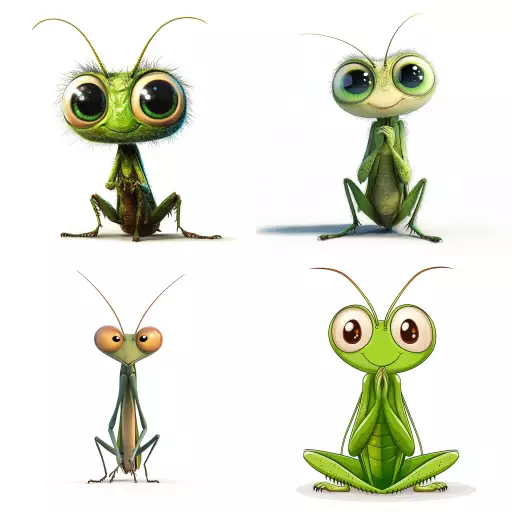Explore the Best AI Image Gallery

A Digital Lens: How AI is Transforming Product Photography
The realm of product photography has always been about capturing attention, showcasing details, and ultimately driving sales. In recent years, a new player has entered the scene, wielding immense power to reshape this creative landscape: Artificial Intelligence (AI).
From automating tedious tasks to generating stunning visuals, AI is proving to be a game-changer for businesses of all sizes. But what exactly are the implications of this technological shift? What opportunities and challenges does it present for photographers and brands alike?
The Rise of AI in Product Photography
AIs influence on product photography manifests in several exciting ways:
- Automated Image Generation: Imagine a world where you can generate realistic product images with just a few clicks. AI algorithms can now analyze product data and create stunning visuals, complete with various backgrounds, lighting effects, and even different angles. This eliminates the need for expensive studio setups and time-consuming photo shoots.
- Image Editing and Retouching: AI-powered tools can automate tedious editing tasks like removing blemishes, adjusting color balance, and enhancing image sharpness. This frees up photographers to focus on more creative aspects of their work.
- Personalized Product Visualization: Customers can now interact with virtual products through AI-driven 3D models. They can rotate, zoom, and even customize products before making a purchase, leading to increased engagement and sales conversions.
- Inventory Management and Optimization: AI can analyze product images to identify inconsistencies or defects in real time. This helps streamline inventory management and ensures that only high-quality products are showcased online.
The Creative Canvas: Shaping the Future of Product Photography
While AI undoubtedly presents a powerful toolkit for photographers, its essential to remember that technology should augment, not replace, human creativity. The role of the photographer will continue to evolve, focusing on:
- Conceptualizing Unique Visual Narratives: Photographers will need to develop compelling visual stories that resonate with target audiences. AI can assist in technical aspects, but the artistic vision remains crucial.
- Harnessing AI as a Creative Tool: Skilled photographers will leverage AI algorithms to explore new creative possibilities, experiment with unconventional aesthetics, and push the boundaries of product visualization.
- Emphasizing Human Connection: AI-generated imagery can be impressive, but theres still a powerful human element in capturing emotions, telling stories, and connecting with viewers on a deeper level.
Ethical Considerations: Navigating the AI Landscape
As AI becomes increasingly integrated into product photography, several ethical considerations need careful attention:
- Transparency and Authenticity: Its crucial to be transparent about the use of AI in creating product imagery. Consumers should be informed when images are partially or fully generated by algorithms.
- Bias and Representation: AI algorithms can inherit biases from the data they are trained on, potentially leading to skewed representations in product photography. Its important to ensure that AI models promote inclusivity and diversity.
- Job Displacement: The automation capabilities of AI raise concerns about potential job displacement for photographers. Retraining programs and reskilling initiatives will be crucial in mitigating this impact.
Looking Ahead: The Future of AI in Product Photography
The future of product photography is undeniably intertwined with the evolution of AI. We can expect:
- More sophisticated and realistic AI-generated imagery:**
- Personalized product experiences tailored to individual customer preferences.
- Integration of AI with augmented and virtual reality technologies for immersive product visualization.
- The emergence of new creative roles focused on guiding AI algorithms and shaping the artistic direction of product photography.
Conclusion
AI is poised to revolutionize product photography, offering both immense opportunities and challenges. By embracing these advancements responsibly, photographers and brands can create captivating visual experiences that engage customers and drive success in the ever-evolving digital landscape.

](https://images.ai-img.art/thumbnails/150/bddf3ae4a232290858389b933c866ad3be429ef2e25c23a9f4d7713ed6e44d0b.webp)
](https://images.ai-img.art/thumbnails/150/f9584153b4cddd8c9fab611dc10247549b275c59bc173251e37d0935874f9deb.webp)

](https://images.ai-img.art/thumbnails/150/c2c9c48b38fae37f0a457b80b084ed01ba803810fc8f488c8f610c03abc74049.webp)




















](https://images.ai-img.art/thumbnails/150/f67d9af3398150f2ab1bcf250717fea134275e2ca896252b54a4d9bb3719f9ac.webp)




](https://images.ai-img.art/thumbnails/150/008b5d5d49667cc2e93a5f8a8adfaa545963da99c39ff0901f5296294636400d.webp)



](https://images.ai-img.art/thumbnails/150/4289d1230b86a96c4d556636c3167bed0ef38f850826549517e4e45db4d87bf7.webp)






